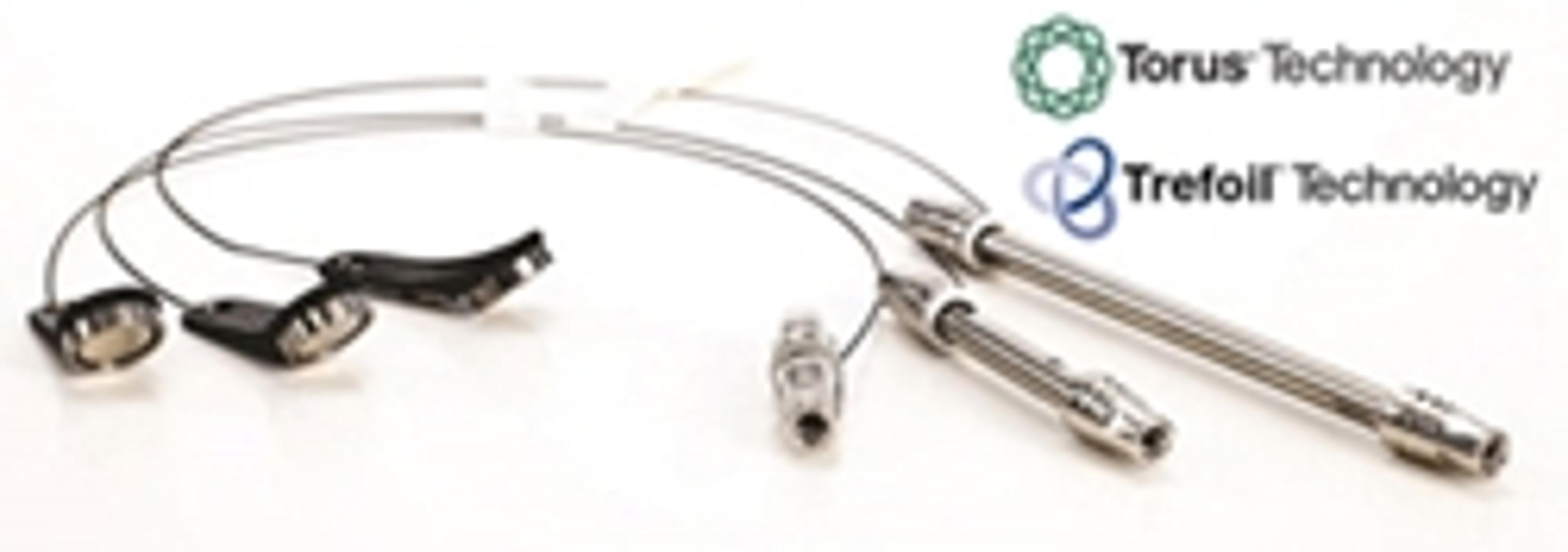Waters Extends ACQUITY UPC<sup>2</sup> Portfolio with New Columns for Chiral and Achiral Separations
8 Oct 2014
Waters Corporation has introduced new analytical columns for chiral and achiral separations designed to optimize convergence chromatography. To address the challenges of chiral separations, Waters ACQUITY UPC2® Trefoil™ Columns are 2.5 micron particle columns that increase speed and selectivity while reducing method development time. Waters ACQUITY UPC2 Torus™ Columns for achiral separations feature 1.7 micron particle technology and deliver a new level of performance for achiral SFC separations in terms of resolution, speed, selectivity and robustness. The columns were introduced at SFC 2014 and are now available for shipment worldwide.
The new columns are designed for use with the Waters ACQUITY UPC2 System, a chromatographic system that takes advantage of the power non-toxic and inexpensive compressed carbon dioxide as the primary mobile phase (carrier liquid) component. It is also a “greener” alternative to expensive organic solvents. The low-dispersion design of the ACQUITY UPC2 System combined with the new columns offer chromatography laboratories a powerful, robust and reliable analytical platform for increasing the speed with which they can develop analytical methods, improve selectivity and shorten run times while at the same time reducing their carbon footprint by transitioning to a greener technology. Since its introduction in 2012, scientists using this system have authored more than 70 articles in scientific journals.
“Waters continues to lead the way when it comes to making convergence chromatography a powerful platform for robust separations," said Michael Yelle, Vice President, Consumables Business Unit, Waters Division. “The new Trefoil and Torus columns represent a new paradigm in phases for carbon dioxide based separations. Designed and optimized for Waters ACQUITY UPC2 system these columns deliver a new standard of performance in terms of the robustness and reliability that scientists have come to expect from analytical HPLC."
Waters ACQUITY UPC2 Trefoil Columns for Chiral Separations
The first such columns from Waters, ACQUITY UPC2 Trefoil Columns are for fast and robust chiral separations. Based on modified polysaccharide-based stationary phases for broad-spectrum chiral selectivity, ACQUITY UPC2 Trefoil 2.5 micron Columns come in three new chemistries: ACQUITY UPC2 Trefoil AMY1, CEL1 and CEL2. Each offers different retention characteristics for separating chiral compounds such as enantiomers, stereoisomers, metabolites, degradants, and impurities with greater resolution and speed. ACQUITY UPC2 Trefoil Columns, combined with the ACQUITY UPC2 System and its ability to perform gradient chromatography using mass spectrometry-compatible organic modifiers, allow scientists to couple to single quadrupole, tandem quadrupole and time-of-flight mass spectrometers and to get more information out of every analysis.
Waters ACQUITY UPC2 Torus Columns for Achiral Separations
Many scientists employing traditional reversed-phase chromatography are often stumped by their ability to baseline resolve chemically-similar molecules. That’s where Waters four new ACQUITY UPC2 Torus Columns can help. These columns exploit the capabilities of Waters ACQUITY UPC2 System to give scientists the resolving power they need to speed method development. Based on a new and proprietary bonding chemistry, these phases cover a range of selectivity while being stable and reproducible ensuring day-to-day and batch-to-batch consistency. ACQUITY UPC2Torus 1.7 micron Columns are available in four chemistries: 2-Picolylamine (PIC), Diethylamine (DEA), High density diol (DIOL) and 1-Aminoanthracene (1-AA) and vary in size from internal dimensions of 2.1 mm to 3 mm and in length from 50 mm to 150 mm.
About Convergence Chromatography
In 2012, the launch of Waters ACQUITY UPC2 System also introduced to science something new - UltraPerformance Convergence Chromatography™. Convergence chromatography, as it is referred to, is a category of separations science that provides an exceptional increase in selectivity for the chromatography laboratory. Scientists now have the freedom to exercise their creativity by using carbon dioxide-based solvents with both polar and non-polar stationary phases to influence their chromatography. They do this by modulating solvent gradients with a much wider panel of columns, including chiral columns, using the same mass spectrometry-compatible co-solvents to separate and quantify structural analogs, isomers, and enantiomeric and diasteriomeric mixtures. Convergence chromatography combines the ease-of-use of reversed-phase LC with the power of normal-phase LC for greater selectivity.


